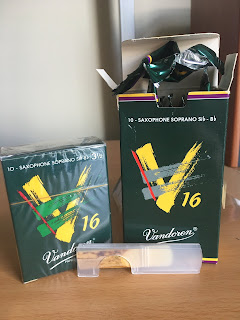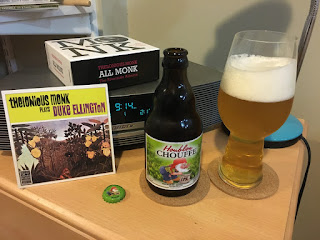This is a follow on from a post from over a year ago (forgive me for repetition). Over the past year and a half or so (probably longer… rust never sleeps), I’ve been making efforts to minimize waste. I’m not hardcore about it, just little steps here and there, and I feel I’ve made some good steps (here's a thank you and plug for Be Free and Hopper). One thing that has bugged me for a long time is the excessive plastic used in packaging saxophone reeds.
I would describe myself as a long term Vandoren user. Over the 26 years or so I’ve been playing saxophone, I’ve used Vandoren more than any other brand. Of all the Vandoren models, V16 tend to work best for me – although I used Traditional a lot too and had a bit of luck with Java as well. I never really understood why reeds come with the plastic reed holders/sleeves. Once you take the reed out of the box and start playing it, the plastic sleeve is never used again. The ‘new’ packaging didn’t do anything for me (I forget when it was introduced… it’s been several years now). Vandoren started individually wrapping the reeds in plastic (I think they claimed it kept reeds at a better humidity level). All it seemed to do was make the box larger and add another layer of plastic. I still have a few boxes of reeds in the old packaging and I’m not sure if I have noticed any improvement with the newer packaging.
So, even though I have a few boxes of Vandoren left, during December I made the move to Gonzalez. I had expected to go with Marca, but they are harder to get here and more expensive. Compared to Vandoren, Gonzalez have WAY less plastic (only the outer wrapping on the box) and the price is better too (downside being I can’t buy them from my preferred retailer). I had played them on alto for a bit back in the day but never settled into them. And back when I was hunting for soprano reeds I tried a couple of boxes and then moved on - and now I'm back. I got a box of each model and I’ve gravitated towards the RC (regular cut). Early days yet, but it’s working out okay (I'm still on my first box). I would like to try a quarter strength softer, but my plan is to stick with them and see how it develops.
I'm not much of one for new year resolutions ("I'm gonna play as well as Steve Lacy by the end of the month!"), but perhaps 2021 will be my year of Gonzalez.




